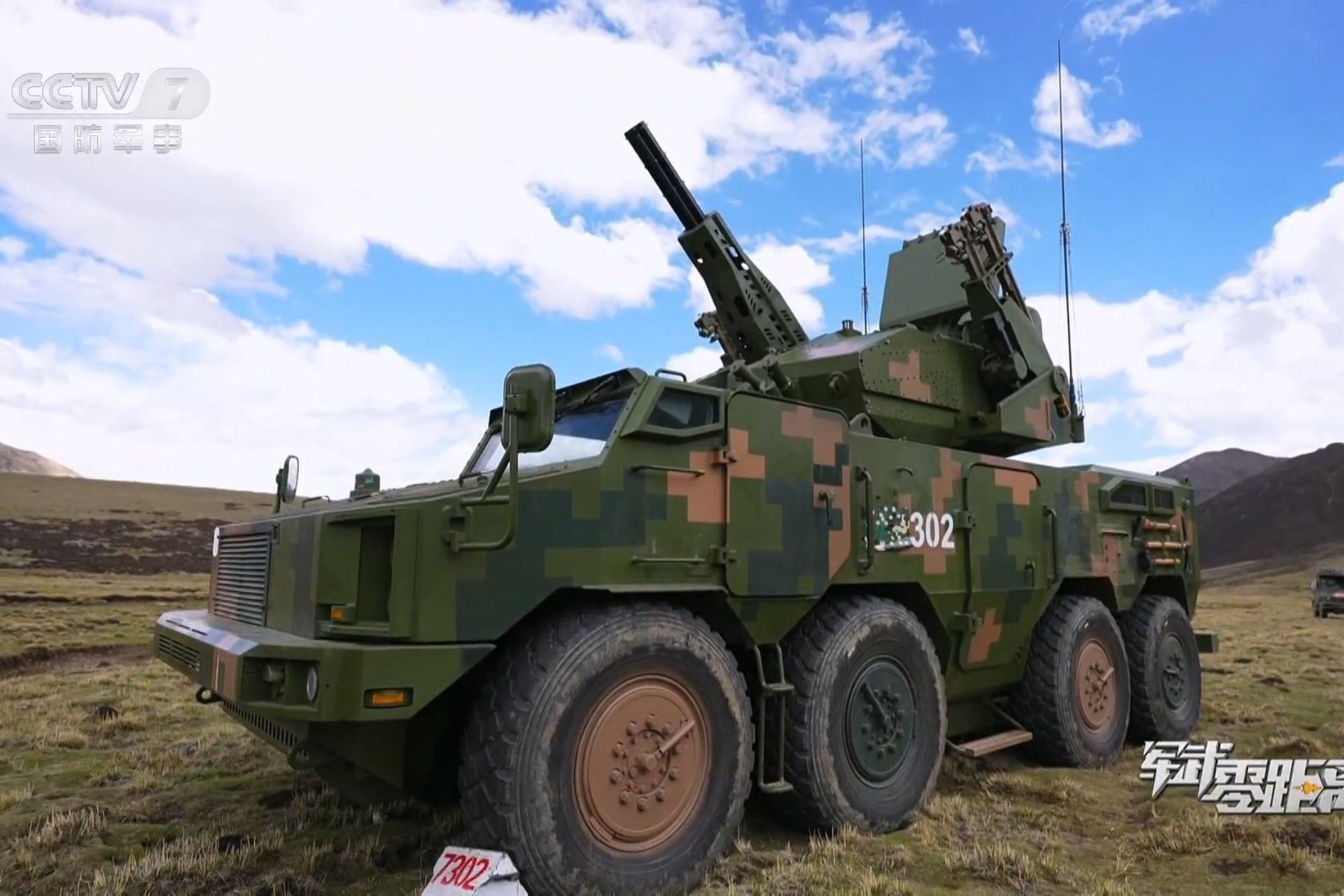Breaking News
China Prepares for High-Altitude Conflict with Live-Firing Drill of Type 625 SPAAG Vehicles.
On July 20, 2024, the People's Liberation Army Ground Force (PLAGF) conducted a live-firing drill involving a Short-Range Air Defense (SHORAD) battery from a combined arms brigade. The exercise, held at an altitude of nearly 5,000 meters, involved at least three Type 625 Self-Propelled Anti-Aircraft Gun (SPAAG) vehicles, identified by the numbers 7302, 7305, and 7306. The SHORAD battery typically comprises four vehicles, though the exact unit participating in this exercise remains unidentified.
Follow Army Recognition on Google News at this link

The Type 625 SPAAG is equipped with a twin 25mm autocannon and advanced radar and electro-optical targeting systems, allowing it to detect, track, and engage low-flying aircraft, helicopters, and unmanned aerial vehicles (UAVs). (Picture source: CCTV 7)
During the live-firing drill, the Type 625 SPAAG vehicles were observed operating with at least two radar systems, enhancing their ability to detect and engage aerial targets. The vehicles are equipped with advanced radar and targeting systems, enabling effective anti-aircraft operations. Trucks were also seen in the background, indicating the logistical support provided during the exercise.
The Type 625 SPAAG is a crucial component of the PLAGF's air defense strategy, particularly in high-altitude regions where the thin atmosphere can affect the performance of aircraft and missiles. The Type 625 Self-Propelled Anti-Aircraft Gun (SPAAG) is a Chinese-made air defense vehicle designed to provide mobile protection against aerial threats. Production and acquisition of the Type 625 began in the early 2010s, with its entry into service around 2014.
The Type 625 SPAAG is equipped with a twin 25mm autocannon and advanced radar and electro-optical targeting systems, allowing it to detect, track, and engage low-flying aircraft, helicopters, and unmanned aerial vehicles (UAVs). The system's radar can simultaneously track multiple targets, providing a high level of situational awareness and responsiveness.
The vehicle is also designed to be highly mobile, capable of keeping up with mechanized and armored units, and can operate in various terrains, including high-altitude regions. The inclusion of anti-drone exercises highlights the increasing importance of counter-unmanned aerial systems (C-UAS) capabilities within the PLAGF. As drones become more prevalent on the modern battlefield, the ability to detect and neutralize these threats is critical for maintaining air superiority and protecting ground forces.
China trains for high-altitude combat for several strategic reasons. Firstly, these mountainous regions require sophisticated logistics and specific military preparation to ensure mobility, survival, and effectiveness of the troops in hostile environments. Troops must be acclimatized to hypoxia and rigorous climatic conditions to maintain their performance. Secondly, mastering operations at high altitudes provides a crucial tactical advantage in potential conflicts with India, as these areas are strategic points for surveillance and territorial control.
Tensions between China and its neighbors, particularly India, largely stem from unresolved territorial disputes and geopolitical rivalries. The 3,488-kilometer Sino-Indian border is marked by several disputed areas, including Aksai Chin and Arunachal Pradesh. These regions often serve as flashpoints between the two nuclear powers. One of the most severe incidents in recent years occurred in June 2020 in the Galwan Valley, where violent clashes between Chinese and Indian soldiers resulted in casualties on both sides. These border conflicts primarily occur at high altitudes, often above 4,000 meters, in extreme conditions requiring specific capabilities and preparations.
High-altitude combat, especially at levels approaching 5,000 meters, presents numerous complex challenges, particularly for operations involving armored vehicles. At these altitudes, the thin air affects the performance of internal combustion engines, reducing their power and efficiency, which can limit the mobility and maneuverability of armored vehicles. Additionally, extreme climatic conditions, such as very low temperatures and sudden weather changes, test the reliability of electronic and mechanical equipment.
Cooling and heating systems must be specially designed to function in these harsh environments. Soldiers must also cope with hypoxia, a decrease in available oxygen, which can affect their alertness, endurance, and ability to make quick decisions. Logistics also becomes a major challenge, as transporting supplies, fuel, and spare parts to such altitudes requires meticulous planning and additional resources. In sum, high-altitude combat necessitates thorough preparation, adapted equipment, and specially trained troops to operate effectively in conditions where every aspect of military engagement is exacerbated by the hostile environment.




























